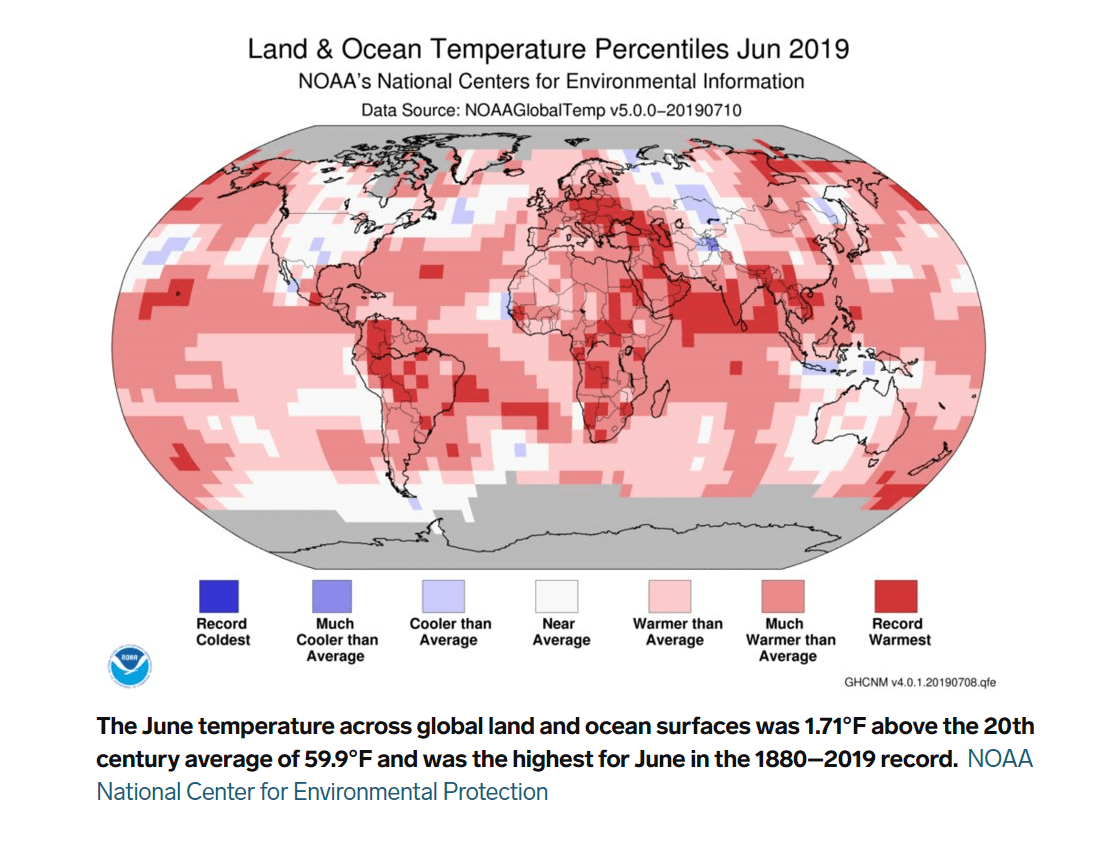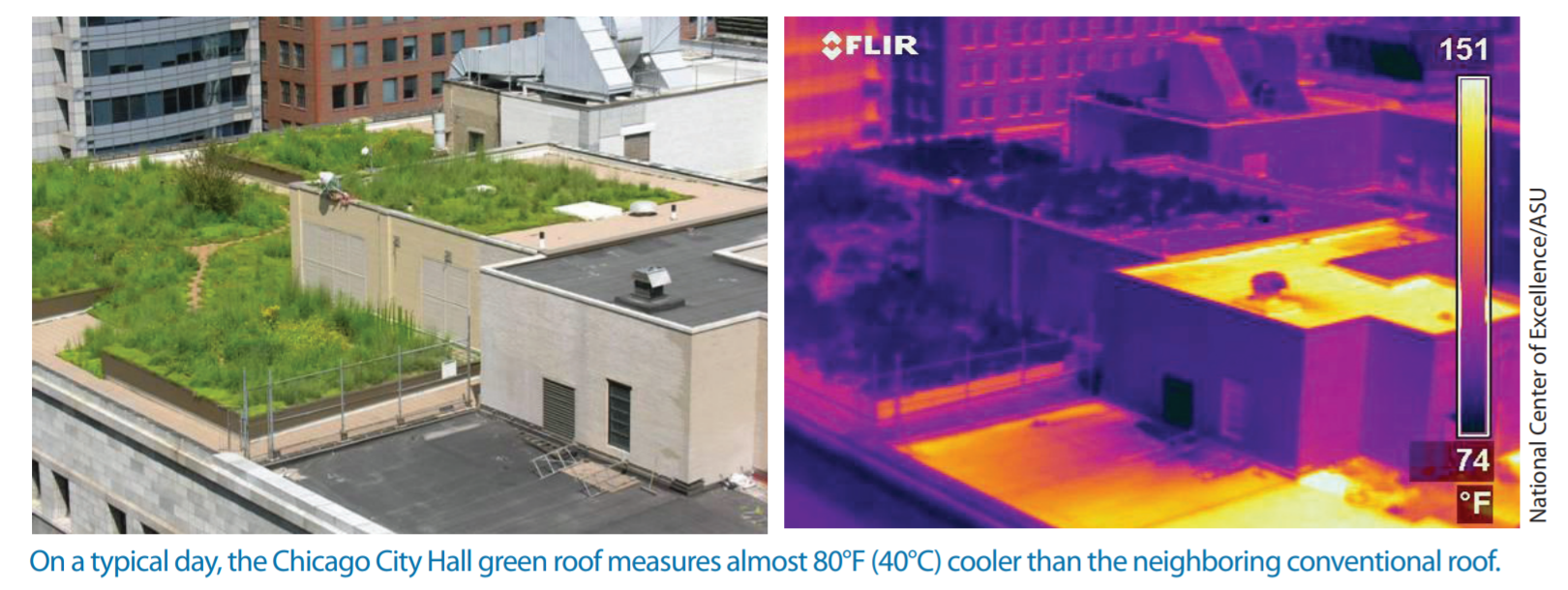It's Hot Out There - And It's Not Just You.
Municipal Planners Face Growing Threat of Urban Heat Islands
No, it’s not just you – rising temperatures are occurring across the globe.
The
National Oceanic and Atmospheric Administration has just reported that June 2019 was the hottest month ever recorded on Earth, and nine out of the 10 warmest Junes ever have occurred since 2010. Globally, June temperatures across land and ocean surfaces averaged 1.71 degrees Fahrenheit higher than the 20th century average of 59.9 degrees and was the highest for June in the 1880-2019 record.
Europe’s heat wave at the end of July brought
record-breaking temperatures across the continent, producing life-threatening conditions.
Concerns across Europe included the potential of Notre Dame’s ceiling collapsing and Britain’s railroads buckling from the heat. Cooling water for two French nuclear reactors was flowing at temperatures higher than permitted, endangering plants and wildlife.
Potential power outages, often a result of heat waves as electric grids are stressed by the increased demand, pose additional economic disruption and health risks, and loss of electricity can be especially detrimental to the old, the young, and to low-income residents. The hot and dry weather also provides ideal conditions for
wildfires, which are becoming bigger and more frequent.
Heat waves are a pressing problem for cities across the globe, threatening residents as well as urban infrastructure. Urban heat islands impact our built environment and have consequential impacts on humans. City structures absorb and hold on to heat longer, raising temperatures and making them difficult to cool. This becomes particularly threatening during heat waves, which are increasing in intensity and duration across the globe. High temperatures put additional stress on our roads, buildings, and other physical structures, causing them to age faster and have higher maintenance and repair costs.
Cities have adapted progressive emergency heat response systems following events such as
Chicago’s 1995 heat wave, which killed more than 700 poor and elderly residents. Many victims lacked working air conditioners or did not want to turn them on due to the financial cost; others lived in high-crime areas and kept their windows closed in fear.
In Europe, where less than five percent of homes are equipped with air conditioning and cool air on public transportation is a rarity, a 2003 heat wave was blamed for 15,000 deaths in France alone.
Cities have also implemented urban design changes to mitigate such threats.
Green spaces have become popular to help curb heat, cooling buildings and the area around them. An example of the impact of a green roof can be seen in the figure below from the EPA’s
Reducing Urban Heat Islands: Compendium of Strategies report.
On a hot day in August, this green roof located on the top of Chicago City Hall measured almost 80 degrees Fahrenheit cooler than the neighboring conventional roof.
Despite evidence of green roofs’ effectiveness, cities do not have a way to measure the impact of such interventions over time.
Cross-sector collaboration will be critical in order to address urban heat islands. Accessing better data and tools will help cities understand where to install future green spaces and even how to deploy emergency response systems. Cities must take proactive, instead of reactive, steps to prevent future tragedies and be prepared to face the changing climate.
About City Tech Collaborative (City Tech): City Tech reinvents cities. We convene cross-sector leaders to tackle urban problems that are too big for any one group to solve on its own. We remake essential city services and infrastructure using advanced technology and then expand these solutions to other cities. With our partners, we have diverted rainwater from overloaded sewer systems, eased subway congestion during large events, and launched a digital directory of public health services. Chicago is our proving ground and every city is a potential partner. To learn more, follow City Tech on
Twitter or
LinkedIn.
About the Author: Laura Vecchetti is the Communications and Grants Associate at City Tech Collaborative. As a member of the Partnerships and Communications Team, Laura works to connect City Tech with the community. Prior to joining the team, Laura was the Development and Communications Coordinator at Nexus Onarga Academy, a national nonprofit providing specialized mental health services for children, youth, and families, where she helped secure funding for therapeutic programs. Laura holds a bachelor’s degree in Public Relations from Bradley University.

